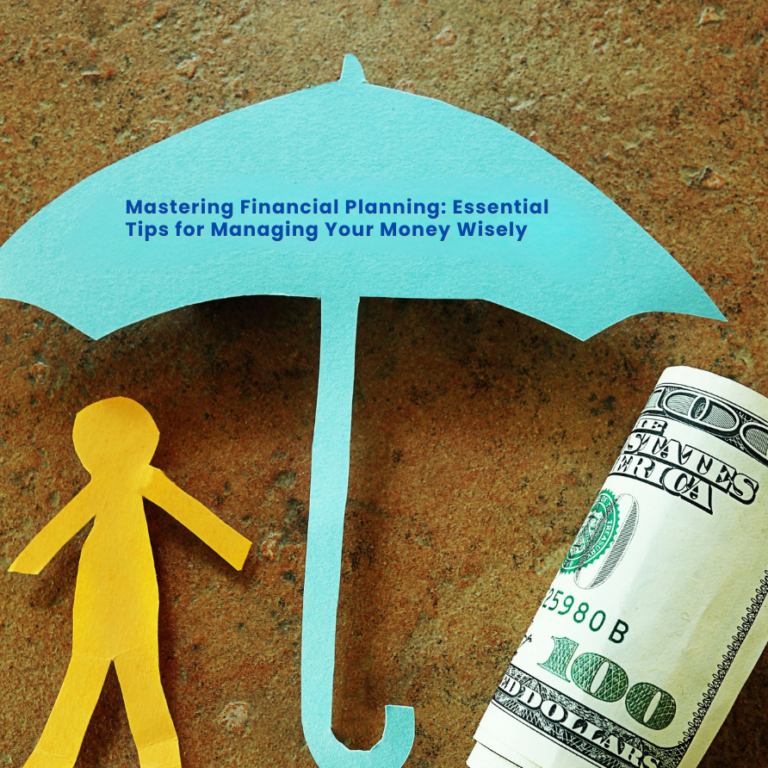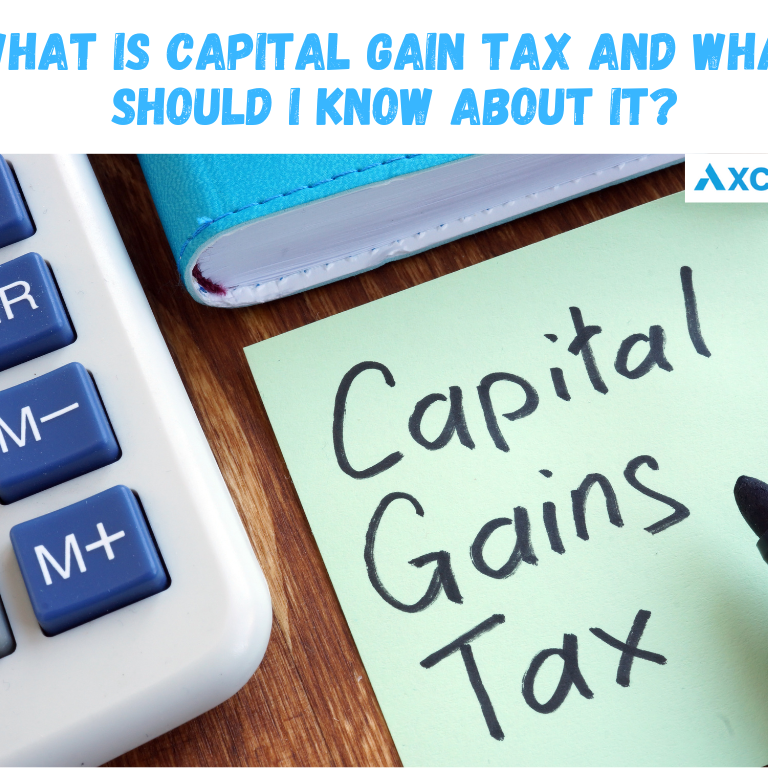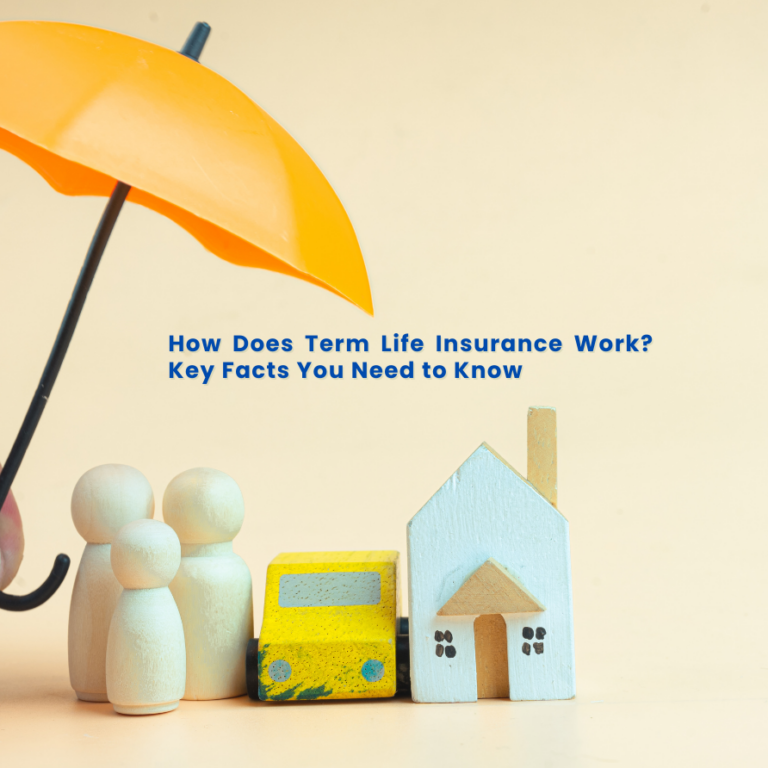Difference between fixed and variable interest rates ?
What is Variable Interest Rates ?
Variable interest rates are a type of interest rate that fluctuates over time, unlike fixed interest rates, which remain constant throughout the loan term. This variability is tied to a benchmark index, such as the prime rate or the federal funds rate. When the benchmark rate changes, the interest rate on your loan or investment also adjusts accordingly.
How Variable Interest Rates Differ from Fixed Interest Rates
When taking out a loan or mortgage, one of the most crucial decisions is choosing between a variable interest rate and a fixed interest rate. Both options have distinct advantages and drawbacks, depending on market conditions and personal financial goals.
Predictability:
Potential for Savings or Loss:
Risk Tolerance:
Common Financial Products with Variable Rates
Variable interest rates are commonly found in several financial products, offering flexibility but also some level of uncertainty. These products adjust their interest rates based on market conditions, often linked to a benchmark rate like the prime rate, LIBOR, or the federal funds rate. Below are some of the most common financial products that feature variable rates:
Mortgages
Variable-Rate Mortgages: Can offer lower initial interest rates compared to fixed-rate options, making them attractive to borrowers who plan to refinance or sell their home before rates rise significantly. However, if rates increase, your monthly payments could also increase.
Credit Cards
Variable-Rate Credit Cards: Many credit cards have variable APRs that are tied to a prime rate or other benchmark. This means your interest rate can change over time, affecting the cost of carrying a balance.
Savings Accounts and Certificates of Deposit (CDs)
Variable-Rate Savings Accounts and CDs: Can offer higher interest rates than traditional fixed-rate accounts, especially in a rising interest rate environment. However, the returns can fluctuate, and you may face early withdrawal penalties.
Home Equity Lines of Credit (HELOCs)
Typically have variable interest rates that adjust periodically. This can make them a flexible borrowing option, but it’s important to be aware of the potential for rate increases, which can impact your monthly payments.
History of Variable Interest Rates
Origins and Adoption in Financial Markets
The concept of adjusting interest rates based on economic conditions is deeply rooted in history. Ancient civilizations, such as the Babylonians and Romans, employed various methods to set interest rates, often influenced by factors like supply and demand, political stability, and the perceived risk of lending.
However, the modern concept of variable interest rates, tied to specific benchmark indices, emerged in the 20th century. This evolution was driven by several factors:
1. Industrial Revolution: The Industrial Revolution led to increased economic activity and the need for more sophisticated financial instruments. Variable interest rates provided a mechanism to adjust to changing economic conditions.
2. Central Bank Influence: Central banks gained significant influence over monetary policy, and their decisions on interest rates began to impact a wide range of financial products.
3. Financial Innovation: The development of financial derivatives and other complex instruments enabled the creation of variable-rate products tailored to specific needs.
Key Historical Events Impacting Rate Variability
Several significant historical events have shaped the trajectory of variable interest rates:
1. The Great Depression: The economic turmoil of the 1930s led to a period of extremely low-interest rates as central banks sought to stimulate economic growth.
2. The Bretton Woods System: This post-World War II monetary system established fixed exchange rates between major currencies. However, the system eventually collapsed in the early 1970s, leading to increased volatility in interest rates.
3. The Great Inflation of the 1970s: High inflation rates forced central banks to raise interest rates sharply to curb price increases.
4. The Global Financial Crisis of 2008: The crisis led to a period of historically low-interest rates as central banks implemented quantitative easing and other unconventional monetary policies.
Role of Central Banks in Shaping Interest Trends
Central banks play a pivotal role in shaping interest rate trends. They employ various monetary policy tools to influence the cost of borrowing and lending:
Open Market Operations
Central banks buy or sell government securities to inject or withdraw liquidity from the market.
Discount Rate
The interest rate at which commercial banks borrow from the central bank.
Reserve Requirements
The proportion of deposits that banks must hold in reserve.
Quantitative Easing
The purchase of long-term securities by the central bank to stimulate economic activity.
How Variable Interest Rates Work
A variable interest rate fluctuates over time based on changes in a benchmark or index, such as the prime rate, LIBOR (London Interbank Offered Rate), or the federal funds rate. These rates are influenced by broader economic factors, including inflation, central bank policies, and market conditions. Unlike fixed interest rates, which remain constant throughout a loan or investment term, variable rates can rise or fall, impacting monthly payments and overall borrowing costs.
Key Components: Base Rate and Margin
Variable interest rates are typically composed of two key components:
- Base Rate: This is a benchmark interest rate set by a central bank or financial institution, serving as the foundation for determining variable rates. Common base rates include:
- Prime Rate: A benchmark interest rate set by commercial banks.
- LIBOR (London Interbank Offered Rate): A benchmark interest rate for short-term loans between banks.
- SOFR (Secured Overnight Financing Rate): A benchmark interest rate for overnight repurchase agreements.
- Federal Funds Rate: The interest rate at which banks lend reserve balances to one another overnight.
Margin: This is a fixed percentage added to the base rate to determine the final interest rate on a loan or investment. The margin varies based on factors such as the borrower’s creditworthiness, the type of loan, and market conditions.
How Rates Are Adjusted Over Time
Variable interest rates are typically adjusted periodically, often monthly or quarterly. The frequency of adjustments and the specific rules governing the adjustments are outlined in the loan or investment agreement.
Here’s a simplified example of how a variable interest rate might work:
1. Initial Rate
The initial interest rate on a loan is calculated by adding the margin to the base rate at the time of origination.
2. Rate Adjustments
As the base rate fluctuates, the interest rate on the loan will adjust accordingly. For instance, if the base rate increases, the interest rate on the loan will also increase.
3. Rate Caps and Floors
Some variable-rate products may include rate caps and floors, which limit the extent to which the interest rate can increase or decrease.
Benefits of Variable Interest Rates
Variable interest rates offer several potential advantages that can be attractive to both borrowers and investors:
Potential for Lower Initial Costs
1. Attractive Introductory Rates: Variable-rate products often start with lower initial interest rates compared to fixed-rate options. This can significantly reduce upfront costs, particularly for large loans like mortgages.
2. Reduced Monthly Payments: Lower initial interest rates can translate into lower monthly payments, making it easier to manage cash flow, especially during the early stages of a loan term.
Flexibility in Loan Repayment or Investment Earnings
1. Adaptability to Changing Economic Conditions: Variable-rate products can adjust to changing economic conditions, providing flexibility in both borrowing and investing.
2. Potential for Lower Borrowing Costs: If interest rates decline, variable-rate loans can become less expensive, resulting in lower monthly payments or faster loan payoff.
3. Potential for Higher Investment Returns: In a rising interest rate environment, variable-rate savings accounts and certificates of deposit (CDs) can offer higher interest rates compared to fixed-rate options, boosting investment returns.
Alignment with Market Conditions
1. Reduced Risk of Loss: For investors, variable-rate investments may offer some protection against inflation. As inflation rises, central banks often increase interest rates to curb price increases. This can lead to higher interest income on variable-rate investments, helping to offset the impact of inflation.
2. Opportunity to Benefit from Economic Recovery: If interest rates rise due to economic recovery, variable-rate investments can participate in the upward trend, potentially generating higher returns.
Risks and Drawbacks of Variable Interest Rates
While variable interest rates offer potential benefits, they also come with inherent risks and drawbacks:
Unpredictable Monthly Payments
Fluctuating Costs: As interest rates fluctuate, your monthly payments can vary significantly. This can make budgeting difficult, especially if you rely on a fixed income or have tight financial constraints.
Reduced Financial Planning: The uncertainty surrounding future payments can make it challenging to plan for long-term financial goals, such as retirement or buying a home.
Potential for Sudden Increases: If interest rates rise rapidly, your monthly payments could increase substantially, potentially straining your budget.
Long-Term Cost Uncertainty
Potential for Higher Long-Term Costs: If interest rates rise significantly over the long term, the total cost of a variable-rate loan can exceed that of a fixed-rate loan.
Reduced Savings Potential: For investors, rising interest rates can erode the value of fixed-income investments, including bonds and fixed-rate CDs. This can reduce your overall investment returns and make it more difficult to achieve your financial goals.
Impact of Economic Changes on Borrowers
Sensitivity to Economic Conditions: Variable-rate loans are more sensitive to economic conditions, such as inflation and recession. If economic conditions deteriorate, central banks may raise interest rates to combat inflation, leading to higher borrowing costs.
Increased Risk of Default: Rising interest rates can strain household budgets, increasing the risk of default on variable-rate loans. This can damage your credit score and make it more difficult to obtain future credit.
Negative Impact on Consumer Confidence: Uncertainty about future interest rates can dampen consumer confidence, leading to reduced spending and economic slowdown.
Financial Products with Variable Interest Rates
Variable interest rates are widely used in various financial products, offering both opportunities and risks:
Mortgages: Adjustable-Rate Mortgages (ARMs)
Lower Initial Rates: ARMs often start with lower initial interest rates compared to fixed-rate mortgages. This can significantly reduce monthly payments, especially during the early years of the loan.
Potential for Higher Long-Term Costs: After the initial fixed-rate period, the interest rate on an ARM becomes variable, tied to a benchmark index. If interest rates rise, your monthly payments can increase, potentially leading to higher overall borrowing costs.
Rate Caps and Floors: Some ARMs have rate caps and floors, which limit the extent to which the interest rate can increase or decrease. These features can provide some protection against extreme interest rate fluctuations.
Credit Cards
Variable APRs: Many credit cards have variable APRs that are tied to a prime rate or other benchmark. This means your interest rate can change over time, affecting the cost of carrying a balance.
Balance Transfer Offers: Credit card companies often offer balance transfer promotions with low introductory APRs. However, these rates are typically variable, and they can increase after a certain period. This can make it more expensive to carry a balance on a transferred balance.
Loans and Lines of Credit
Business Loans: Some business loans have variable interest rates, which can make them more affordable in a low-interest-rate environment. However, rising interest rates can increase borrowing costs and strain cash flow, particularly for businesses with variable operating expenses.
Personal Lines of Credit: Personal lines of credit, such as home equity lines of credit (HELOCs), often have variable interest rates. This can make them flexible borrowing options, but it’s important to be aware of the potential for rate increases, which can impact your monthly payments.
Factors That Influence Variable Interest Rates
Variable interest rates are influenced by a complex interplay of economic, political, and financial factors. Here are some of the key factors that can impact these rates:
Economic Indicators
1. Inflation: Inflation, the rate at which prices for goods and services increase over time, is a major factor influencing interest rates. Central banks often raise interest rates to combat inflation and stabilize prices. Conversely, they may lower rates to stimulate economic growth during periods of low inflation.
2. Gross Domestic Product (GDP): GDP measures the overall economic output of a country. Strong GDP growth can lead to higher interest rates as the economy strengthens. Conversely, weak GDP growth may lead to lower interest rates to stimulate economic activity.
3.Unemployment Rate: The unemployment rate is a key indicator of economic health. Low unemployment rates can signal a strong economy, which may lead to higher interest rates. Conversely, high unemployment rates can indicate a weak economy, which may lead to lower interest rates.
Monetary Policy and Central Bank Decisions

Global Market Trends and Geopolitical Events
Global Economic Growth: Global economic conditions, such as international trade and investment flows, can impact interest rates. Stronger global growth can lead to higher interest rates as demand for capital increases.
Geopolitical Events: Geopolitical events, such as wars, trade disputes, and political instability, can create uncertainty and volatility in financial markets, affecting interest rates.
Commodity Prices: Fluctuations in commodity prices, such as oil and natural gas, can impact inflation and interest rates. For example, rising oil prices can increase inflation, leading to higher interest rates.
Managing Variable Interest Rates as a Consumer
Effectively managing variable interest rates requires a proactive approach and a deep understanding of your financial situation. Here are some strategies to help you navigate the complexities of variable-rate products:
Understanding Rate Caps and Floors
Rate Caps: These limit the maximum amount by which your interest rate can increase over a specific period. They provide a ceiling on your potential costs, offering some protection against significant rate hikes.
Rate Floors: These set a minimum interest rate, preventing it from falling below a certain level. While this may limit potential savings during periods of declining rates, it can provide stability and predictability.
Strategies for Budgeting with Variable Payments
1. Create a Flexible Budget: Develop a budget that can accommodate fluctuations in your monthly payments. Consider allocating additional funds to a savings account to act as a buffer during periods of increased expenses.
2. Build an Emergency Fund: Having an emergency fund can provide a financial cushion to cover unexpected expenses or to bridge any gaps in your budget caused by increased interest payments.
3. Prioritize High-Interest Debt: If you have multiple debts with variable interest rates, prioritize paying off high-interest debt first to reduce your overall interest costs.
Refinancing or Switching to Fixed Rates
1. Refinancing: If interest rates decline, you may be able to refinance your variable-rate loan with a fixed-rate loan at a lower interest rate. This can lock in a lower rate and provide stability in your monthly payments.
2. Switching to Fixed-Rate Products: For investments, consider switching from variable-rate products, such as variable-rate CDs or savings accounts, to fixed-rate options if you’re concerned about rising interest rates. Fixed-rate products offer predictable returns, reducing uncertainty.
Additional Tips
1.Stay Informed: Monitor interest rate trends, economic indicators, and central bank decisions to anticipate potential changes in your interest rate.
2. Review Your Financial Situation Regularly: Assess your financial goals, risk tolerance, and current economic conditions to determine if your current variable-rate products are still aligned with your needs.
3. Consult with a Financial Advisor: A financial advisor can provide personalized advice based on your specific circumstances. They can help you evaluate the potential risks and benefits of variable-rate products and recommend strategies to manage your finances effectively.
4. Consider a Hybrid Approach: Some financial institutions offer hybrid products that combine features of both fixed-rate and variable-rate loans. These products can provide a balance between stability and flexibility.
Variable Interest Rates in Investing
Variable interest rates can have a significant impact on various investment instruments. Here’s a more detailed look:
Bond Investments
Floating-Rate Bonds: These bonds offer coupon payments that adjust periodically based on a benchmark interest rate. As interest rates rise, so do the coupon payments, making these bonds attractive in a rising-rate environment. However, in a falling-rate environment, the coupon payments may decrease, reducing the bond’s attractiveness.
Inverse Floating-Rate Bonds: These bonds have coupon rates that move inversely to a benchmark interest rate. They can be beneficial in a falling-rate environment, as their coupon payments increase as interest rates decline. However, in a rising-rate environment, their coupon payments decrease.
Mutual Funds and Securities Affected by Rate Changes
Bond Funds: Bond funds invest in a portfolio of bonds, including both fixed-rate and variable-rate bonds. As interest rates fluctuate, the value of these bonds can change, impacting the fund’s net asset value (NAV). Rising interest rates can lead to declining bond prices, while falling interest rates can lead to increasing bond prices.
Equity Funds: While equity funds primarily invest in stocks, they can be indirectly affected by interest rate changes. Rising interest rates can increase the cost of borrowing for businesses, which may impact corporate earnings and stock prices. Additionally, rising interest rates can make fixed-income investments more attractive, potentially diverting investor funds away from equities.
Risk Mitigation Strategies for Investors
Diversification: Diversifying your investment portfolio across various asset classes, including stocks, bonds, and alternative investments, can help reduce the impact of interest rate fluctuations. By spreading your investments across different asset classes, you can mitigate the risk associated with any single asset class.
Asset Allocation: Carefully allocating your investments between different asset classes based on your risk tolerance and investment goals can help manage interest rate risk. For example, if you are concerned about rising interest rates, you may want to increase your allocation to stocks, which tend to perform well in inflationary environments.
Dollar-Cost Averaging: Investing a fixed amount regularly, regardless of market conditions, can help reduce the impact of market volatility, including interest rate fluctuations. By investing consistently, you can take advantage of both rising and falling markets.
Professional Advice: Consulting with a financial advisor can provide personalized guidance on managing interest rate risk and developing an investment strategy tailored to your specific needs. A financial advisor can help you assess your risk tolerance, time horizon, and financial goals, and recommend appropriate investment strategies.
Future Trends in Variable Interest Rates
The landscape of variable interest rates is constantly evolving, shaped by a variety of factors, including technological advancements, regulatory changes, and economic shifts. Here are some key trends to watch:
Shift from LIBOR to SOFR and Its Implications
One of the most significant changes in recent years has been the transition from LIBOR (London Interbank Offered Rate) to SOFR (Secured Overnight Financing Rate) as a key benchmark interest rate. LIBOR, historically used in a wide range of financial contracts, has been plagued by scandals and regulatory scrutiny. As a result, many financial institutions and regulators are moving towards SOFR, which is considered to be a more robust and transparent benchmark.
This transition from LIBOR to SOFR has significant implications for variable-rate products, including:
1. Changes in Interest Rate Calculations: Financial institutions will need to adjust their systems and processes to use SOFR as the benchmark rate.
2. Impact on Financial Contracts: Existing contracts that reference LIBOR will need to be amended or replaced with contracts that reference SOFR.
3. Increased Volatility: The transition period may lead to increased volatility in interest rates as markets adjust to the new benchmark.
Impact of Technology and AI on Interest Rate Predictions
Technological advancements, particularly in artificial intelligence and machine learning, are revolutionizing the way interest rates are predicted and managed. AI-powered tools can analyze vast amounts of data, including economic indicators, market trends, and social media sentiment, to identify patterns and trends that may not be apparent to human analysts. This can lead to more accurate and timely forecasts of interest rate movements.
Additionally, AI can be used to develop sophisticated models that can simulate the impact of various economic scenarios on interest rates. This can help individuals and businesses make informed decisions about their financial strategies.
Preparing for Economic Uncertainty in Rate Adjustments
Economic uncertainty, such as geopolitical tensions, trade disputes, and global pandemics, can significantly impact interest rate trends. To prepare for such uncertainties, it’s essential to:
1. Diversify Investments: Spreading investments across various asset classes, including stocks, bonds, and alternative investments, can help mitigate the impact of interest rate fluctuations.
2. Monitor Economic Indicators: Stay informed about key economic indicators, such as inflation, GDP growth, and unemployment rates, to anticipate potential changes in interest rates.
3. Consult with Financial Advisors: Seek professional advice to develop a comprehensive financial plan that addresses interest rate risk and other factors. A financial advisor can help you assess your risk tolerance, time horizon, and financial goals, and recommend appropriate investment strategies.
4. Consider Hedging Strategies: Explore hedging strategies, such as interest rate swaps or options, to protect against adverse interest rate movements. These strategies can help mitigate the impact of unexpected interest rate changes on your financial portfolio.
Conclusion: Navigating the Complexities of Variable Interest Rates
Variable interest rates offer a dynamic approach to borrowing and investing, with their fluctuating nature tied to broader economic conditions and benchmark indices. While they provide potential benefits such as lower initial costs, flexibility, and alignment with market trends, they also introduce risks like unpredictable monthly payments, long-term cost uncertainty, and sensitivity to economic changes. Understanding how variable interest rates work—and weighing their advantages against their drawbacks—is essential for making informed financial decisions.
Key Takeaways:
How Variable Interest Rates Work :
- Variable interest rates are composed of a base rate (e.g., prime rate, LIBOR, SOFR) and a margin, which together determine the final rate.
- These rates adjust periodically based on changes in the benchmark index, influenced by factors like inflation, central bank policies, and market conditions.
Benefits of Variable Interest Rates :
- Lower Initial Costs : Attractive introductory rates can reduce upfront borrowing expenses and monthly payments.
- Flexibility : Variable-rate products adapt to changing economic conditions, offering opportunities for reduced borrowing costs or higher investment returns.
- Alignment with Market Conditions : Investors may benefit from rising interest rates, which can offset inflation and generate higher returns.
Risks and Drawbacks :
- Unpredictable Payments : Fluctuating rates can lead to significant variations in monthly payments, complicating budgeting and financial planning.
- Long-Term Cost Uncertainty : Rising interest rates can result in higher overall borrowing costs compared to fixed-rate options.
- Economic Sensitivity : Borrowers face increased financial strain during periods of economic volatility, potentially leading to higher default risks.
Impact on Borrowers and Investors :
- For borrowers, variable-rate loans can be advantageous in a low-interest-rate environment but risky if rates rise unexpectedly.
- For investors, variable-rate products offer opportunities for growth in rising-rate environments but carry risks in volatile markets.
Role of Central Banks and Economic Factors :
- Central banks play a critical role in shaping interest rate trends through tools like open market operations, discount rates, and quantitative easing.
- Historical events, such as the Great Depression, the Great Inflation, and the 2008 financial crisis, have significantly influenced the evolution of variable interest rates.
Final Thoughts:
Choosing between variable and fixed interest rates depends on your financial goals, risk tolerance, and market outlook. If you prioritize stability and predictability, fixed-rate products may be more suitable. However, if you’re comfortable with some level of risk and seek potential savings or higher returns, variable-rate options could align better with your needs.
To make the most of variable interest rates, consider these strategies:
- Monitor Economic Trends : Stay informed about benchmark rate changes and central bank policies to anticipate potential rate adjustments.
- Budget for Fluctuations : Plan for variability in monthly payments to avoid financial strain during periods of rising rates.
- Evaluate Long-Term Goals : Assess whether the potential benefits of variable rates outweigh the risks based on your financial situation and objectives.
- Explore Rate Caps and Floors : Look for products with rate caps to limit exposure to sudden spikes in interest rates.
Ultimately, variable interest rates are a double-edged sword, offering both opportunities and challenges. By understanding their mechanics, staying vigilant about market conditions, and aligning them with your financial strategy, you can navigate their complexities and make choices that support your long-term financial well-being.






